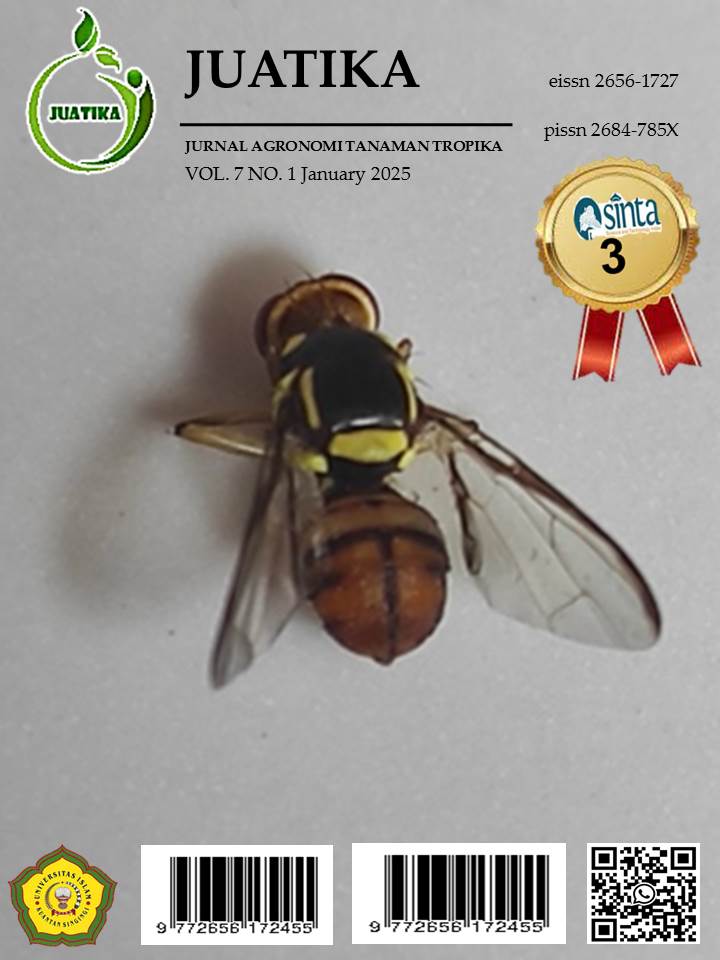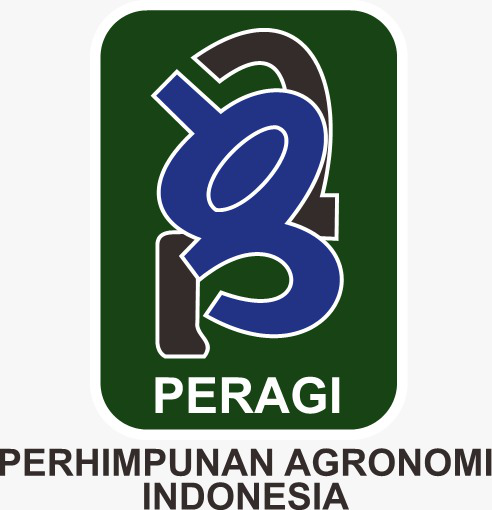Evaluate The Effect of Different Concentrations of Gibberelin (GA3) on The Gemination and Early Seedling Growth of F1 Hybird Cucumber Cucumis sativus in Malaysia
Abstract
Conditions and factors that can influence the development of cucumber cultivation in Malaysia are climate and soil because Malaysia has a warm and humid climate, ideal for growing cucumbers. Farmers' cultivation methods often use hydroponic techniques and planting systems in open fields. Providing gibberellin to cucumber plants can be a solution to overcome several problems that cause suboptimal production. Objective: This study aims to evaluate the effect of different concentrations of gibberellin (GA3) on the germination and initial growth of F1 hybrid cucumber seeds. This research method was prepared in a Non-Factoral Completely Randomized Design (CRD) in 4 replications which were repeated once. The first factor is without concentration (control), (200 ppm), (500 ppm), (800 ppm). The gibberellin concentration can significantly influence all cucumber growth parameters, except for the root length of cucumber plants. The best treatment is P3 (500 ppm).
Downloads
References
Asra, R., & Ubaidillah. (2012). Effect of gibberellin (GA3) concentration on the nutritional value of Calopogonium caeruleum. Journal of Animal Sciences, 15(2), 81–85.
Elfianis, R. S. H. I. P., & Handoko, J. (2019). Effect of scarification and gibberellin hormone (GA3) on germination and growth of Putri palm seedlings (Veitchia merillii). Agrotechnology Journal, 10(1), 41–48.
Fikriyah, U. R. A., & Sitawati. (2019). Effect of application of gibberellin acid (GA3) and paclobutrazol on the growth and flowering of garden roses (Rosa sp.). 7(6), 968–977.
Harsono, N. A. F. M. B., & Azizah, E. (2021). Effect of storage period and concentration of red bottom extract (Allium cepa L.) on viability and vigor of apple cucumber (Cucumis sp.) seeds. Wahana Pendidikan Scientific Journal, 7(5), 14–26.
Hidayatullah, A., Bano, A., & Khokhar, K. M. (2009). Sex expression and level of phytohormones in monoecious cucumber as affected by plant growth regulators. Sarhat Agriculture Journal, 2(25), 175–178.
Kartikasari, O. N. A., & Koesriharti. (2016). Response of three cucumber plant varieties (Cucumis sativus L.) to the application of the growth regulator substance gibberellin (GA3). Journal of Crop Production, 4(6), 425–430.
Khamid, M. B. R. D. R. S., & Saputro, N. W. (2019). Viability and vigor response of apple cucumber (Cucumis melo L.) seeds due to matriconditioning treatment and gibberellin ZPT concentration. Indonesian Agrotek Journal, 4(2), 59–65.
Khoirimah, B. O., & Murtiyaningsih, H. (2024). Effectiveness of gibberellin concentration (GA3) and weeding time on the growth and yield of cucumber plants (Cucumis sativus L.). Journal of Agrotechnology Science, 2(1), 34–43.
Saptana, S., & Indraningsih, K. S. (2006). Turning excellence into competitive advantage through the development of horticultural business partnerships. Journal of Agro Economic Research, 24(1), 61–76.
Santoso, A. R. M., & Maghfoer, D. (2022). Effect of P fertilizer dosage and gibberellin concentration on growth and yield of cucumber plants (Cucumis sativus L.). Journal of Crop Production, 10(1), 19–28.
Octaviani, D. M. H., & Rahmawati, M. (2021). Parthenocarpy initiation of fruit formation of cucumber (Cucumis sativus L.) Wuku variety due to gibberellin concentration and phosphorus fertilizer dose. Agrista Journal, 25(2), 82–90.
Rosa, A. G. (2024). Growth and yield of two cucumber varieties (Cucumis sativus L.) due to application of gibberellin hormone. Journal of Crop Production, 12(2), 80–89.
Copyright (c) 2025 Zulfa Pulungan, Aisar Novita, Aisar Novita, Sebrina Saiin

This work is licensed under a Creative Commons Attribution 4.0 International License.
Authors who publish with Jurnal Agronomi Tanaman Tropika (JUATIKA) agree to the following terms:
Authors retain copyright and grant the Jurnal Agronomi Tanaman Tropika (JUATIKA) right of first publication with the work simultaneously licensed under a Creative Commons Attribution License (CC BY 4.0) that allows others to share (copy and redistribute the material in any medium or format) and adapt (remix, transform, and build upon the material for any purpose, even commercially) with an acknowledgment of the work's authorship and initial publication in Jurnal Agronomi Tanaman Tropika (JUATIKA).
Authors are able to enter into separate, additional contractual arrangements for the non-exclusive distribution of the journal's published version of the work (e.g., post it to an institutional repository or publish it in a book), with an acknowledgment of its initial publication in Jurnal Agronomi Tanaman Tropika (JUATIKA). Authors are permitted and encouraged to post their work online (e.g., in institutional repositories or on their website) prior to and during the submission process, as it can lead to productive exchanges, as well as earlier and greater citation of published work.







 More Information
More Information



